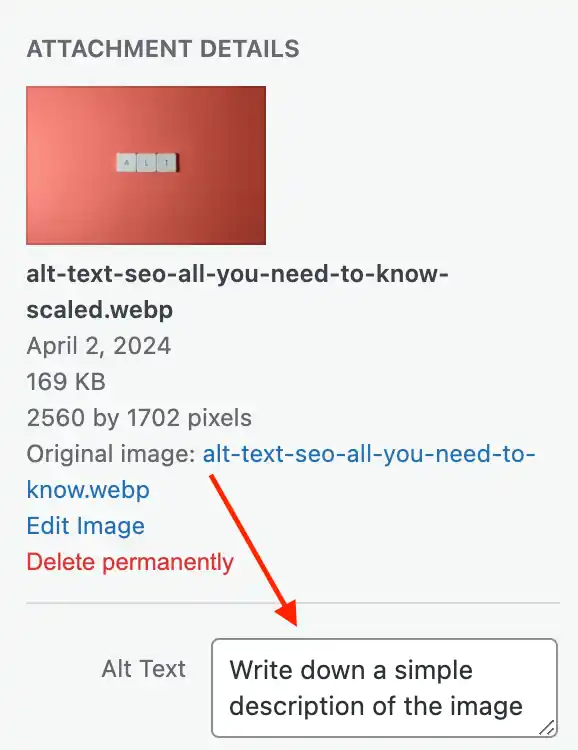Ever wondered how search engines like Google figure out what’s in an image on your website? They can’t see pictures the way humans do, so they rely on a little helper called an “alt text.” This blog post will walk you through what alt tags are, why they matter for SEO, and how you can use them to help your website perform better.
What’s an Alt Tag?
An alt tag, short for “alternative text,” is a short description of an image on a web page. It’s not visible to regular visitors browsing your site. Instead, screen readers are used by people who are visually impaired and by search engines to understand the content of the image.
Why Do Alt Tags Matter for SEO?
Search engines aim to provide the best results for users’ queries. To do this for images, they rely on alt tags to understand and index an image properly. If your images have accurate and descriptive alt tags, search engines are more likely to consider them relevant to certain search terms. This can help your images show up in search results, potentially driving more traffic to your site. But alt images can affect ranking only in Search Image results, not the web search.
Moreover, SEO alt tags improve the accessibility of your website. They help visually impaired users understand the content of images through screen readers. By making your site more accessible, you not only reach a wider audience but also align with web standards that can positively affect your site’s SEO performance.
How to Use Alt Text Effectively: 5 Tips
You can write alt text of the image by yourself or use AI tools to generate alt text. If you want to write an alt text effectively, follow these tips:
- Describe what’s in the image as clearly and simply as you can. If the image is of a black dog playing fetch, your alt tag could simply be “black dog playing fetch.”
- If it’s natural to include a keyword you’re targeting in your alt tag, go for it. But avoid stuffing keywords where they don’t make sense. It should feel like a natural part of the description.
- Use no more than 125 characters. Screen readers often cut off alt text beyond this length, so keeping it short ensures your entire description is heard.
- Don’t Say “Image of” or “Photo of”.
- Sometimes, how you describe an image depends on its context on the page. If the image complements the text around it, make sure your alt text reflects that relationship.
So, if you’re using WordPress as CMS for your website, after uploading the image, in the field “Alt text” write down a simple description of the image, following tips previously written.

Can Alt Text Affect Ranking?
Search engines like Google use many clues to understand and rank your website’s content, and alt text is one of these clues. Alt text helps search engines figure out what an image is about. This is important because search engines can’t see images the way people do; they need text to understand the content.
When you add relevant and descriptive alt text to your images, you’re basically telling search engines, “Hey, this image is about this topic.” If the topic or keywords in your alt text match what people are searching for, your image (and often the page it’s on) has a better chance of showing up in search results. This can lead to more people visiting your site. And remember, that not only alt text can affect ranking, you need to include every aspect of search engine optimization. Hiring a data-driven SEO company might be a good decision for your business.
But it’s not just about throwing in a bunch of keywords. The alt text should describe the image. This accuracy helps search engines trust your website more, which can positively affect your ranking. Also, good alt text makes your site more accessible to people who use screen readers, improving user experience for everyone.
In short, yes, if we talk about Image Search a properly written alt text can help your site rank better in search results.
Adding alt tags into your SEO strategy is a smart move. Not only does it help search engines understand and rank your content, but it also makes your website more accessible. By following the tips outlined above, you can ensure your images are working hard to drive traffic to your site. Remember, SEO is about making your site better for both search engines and your visitors, and alt tags are a simple but effective tool to help you achieve that.




